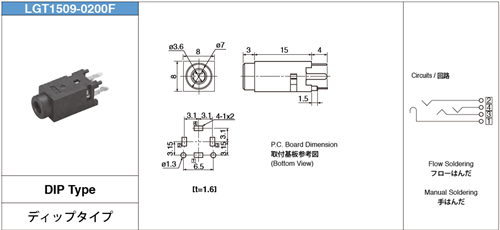Other Parts Discussed in Thread: TS3A226AE, TS3A225E
Hi,
This thread has been locked.
If you have a related question, please click the "Ask a related question" button in the top right corner. The newly created question will be automatically linked to this question.
Hi,
Hello Yusuke,
Yes this device does offer standalone use without i2c.
In the datasheet there is a section where it tell you what to do with those pins if you do not use them, please see the snippet bellow:
If you go further down the datasheets, there will be some more descriptions as to what to do when not using i2c.
Thank you,
Louie
Louie-san,
Thank you for your kind support.
Let me ask you one more thing.
I got a question from the customer about how to pin assign when not using I2C (stand-alone).
Could you give me your advice?
1.Could you tell me how to handle the DET_TRIGGER pin in stand-alone.
Is it OK with OPEN processing?
2.Could you tell me how to handle the MIC_PRESENT pin in stand-alone.
Is it OK with OPEN processing?
3.The default setting is SW selection automatic selection.
When using the default setting, Is it correct by understanding that SW control is unnecessary?
Best Regards,
Yusuke/Japan Disty
Yusuke-san,
1.Could you tell me how to handle the DET_TRIGGER pin in stand-alone.
Is it OK with OPEN processing?
The DET_TRIGGER pin needs to see a high to low transition on the pin to initiate the detection algorithm that determines what type of headset is plugged into the system.
This high to low transition can be accomplished using a GPIO from a process or you can use the physical mechanical switch in the audio jack connector with the internal pull up in the TS3A227E DET_TRIGGER pin to create this transition on the pin when a head set is inserted into the jack.
2.Could you tell me how to handle the MIC_PRESENT pin in stand-alone.
Is it OK with OPEN processing?
The MIC_PRESENT pin is used to tell the system that there is a microphone plugged in. This is an open drain output and can be pulled up to VDD when it is unused.
3.The default setting is SW selection automatic selection.
When using the default setting, Is it correct by understanding that SW control is unnecessary?
The switch registers default to the reset values. You can see that manual control of the internal switch matrix is disabled by default.
Thank you,
Adam
Adam-san,
Thank you for your kind support.
Let me ask you one more thing.
Customers are considering the following connector.
LGT1509-0200F
http://www.smk.co.jp/products/detail/Mini_Jacks/?seni=&youto=&no=&karamu=&sort=&sid=&hid=19397&tp=&version=en
In this case, Could you tell me the recommended connection method with TS3A277E?
Please tell me the recommended circuit connection example.
Best Regards,
Yusuke/Japan Disty
Yusuke-san,
The audio jack you show does not contain a switch that can be used to trigger a detection sequence. You will need to select on that has a switch like shown in the TS3A227E EVM if you want to make use the insertion of an audio accessory triggering the TS3A227E detection sequence.
You can see that pin 5 of the audio jack is connected from pin 2 until something is inserted into the plug and then it will move out of the way and break the connection between pin 5 and pin 2.
If you would like to use your jack above you will need to supply the TS3A227E DET_TRIGGER pin a high to low transition or use I2C commands to trigger the detection sequence to configure the TS3A227E switch matrix to the appropriate accessory.
Thank you,
Adam
Adam-san,
Thank you for your response and support.
I understood your explanation.
However,Customers do not want to use I2C.
Is there a method for automatic detection without using det trigger?
On the other hand, ts3a226 does not have a det trigger pin.
Do TS3A226 have a det trigger function in the internal IC?
Best Regards,
Yusuke/Japan Disty
Yusuke-san,
How does the IC know when to run the detection sequence? You need to tell all TI audio jack detection switches when to run the detection. You can see this same need in all datasheets including the TS3A226AE datasheet.
Once you tell the IC to run the detection everything else is automatic. The IC saves system power by only running the detection sequence when it is told and is idle the rest of the time.
You can create a rising or falling edge in your system in many different ways including:
1) Using a GPIO from a microprocessor
2) Using a pull up or pull down circuit with the audio jack's that include a mechanical switch. You can see examples of this circuit in the datasheets and in the EVMs (Unfortunately the jack you showed a as shown above doesn't have the mechanical switch needed to make this circuit)
3) Using I2C commands for the TS3A225E or TS3A227E devices (not possible with TS3A226AE)
Thank you,
Adam